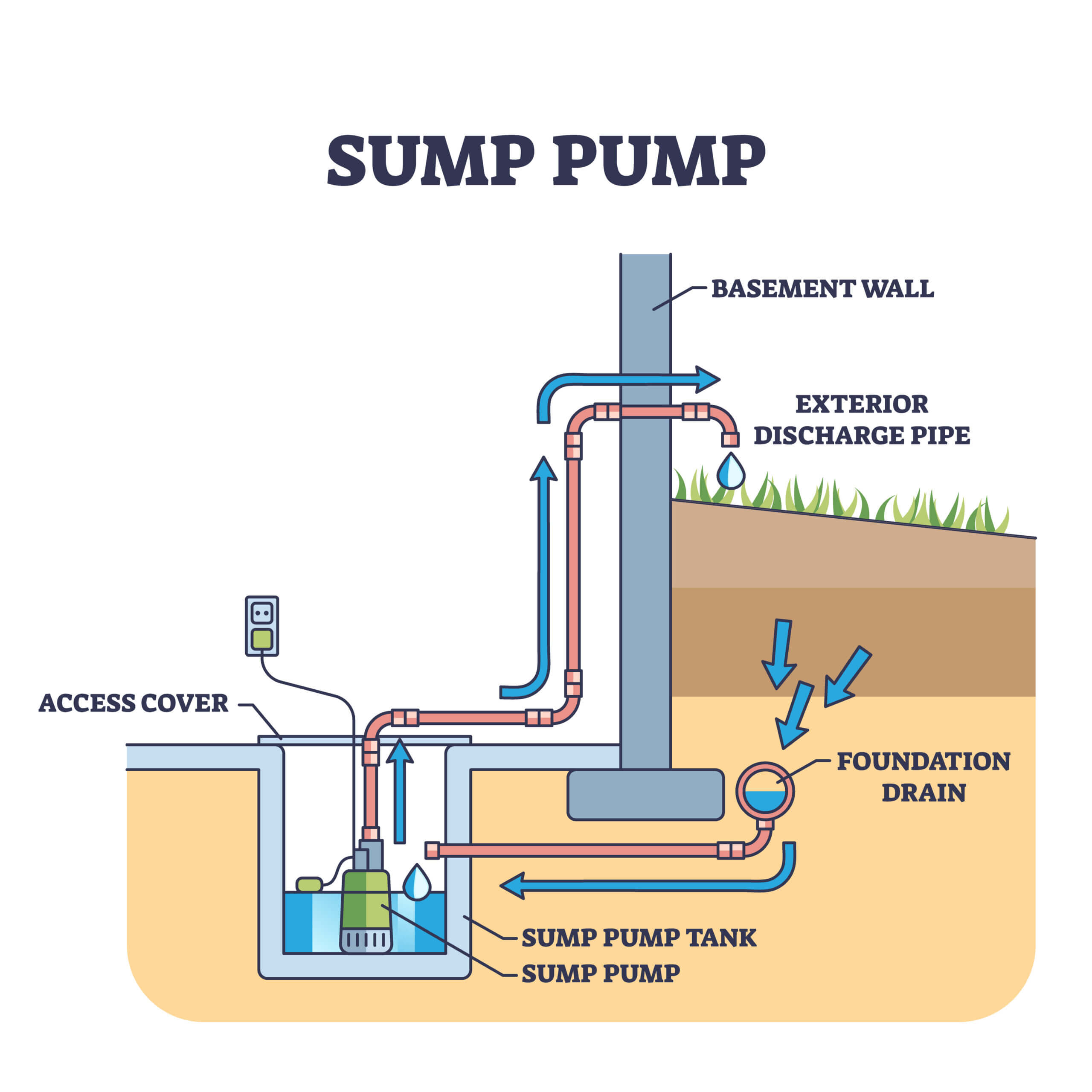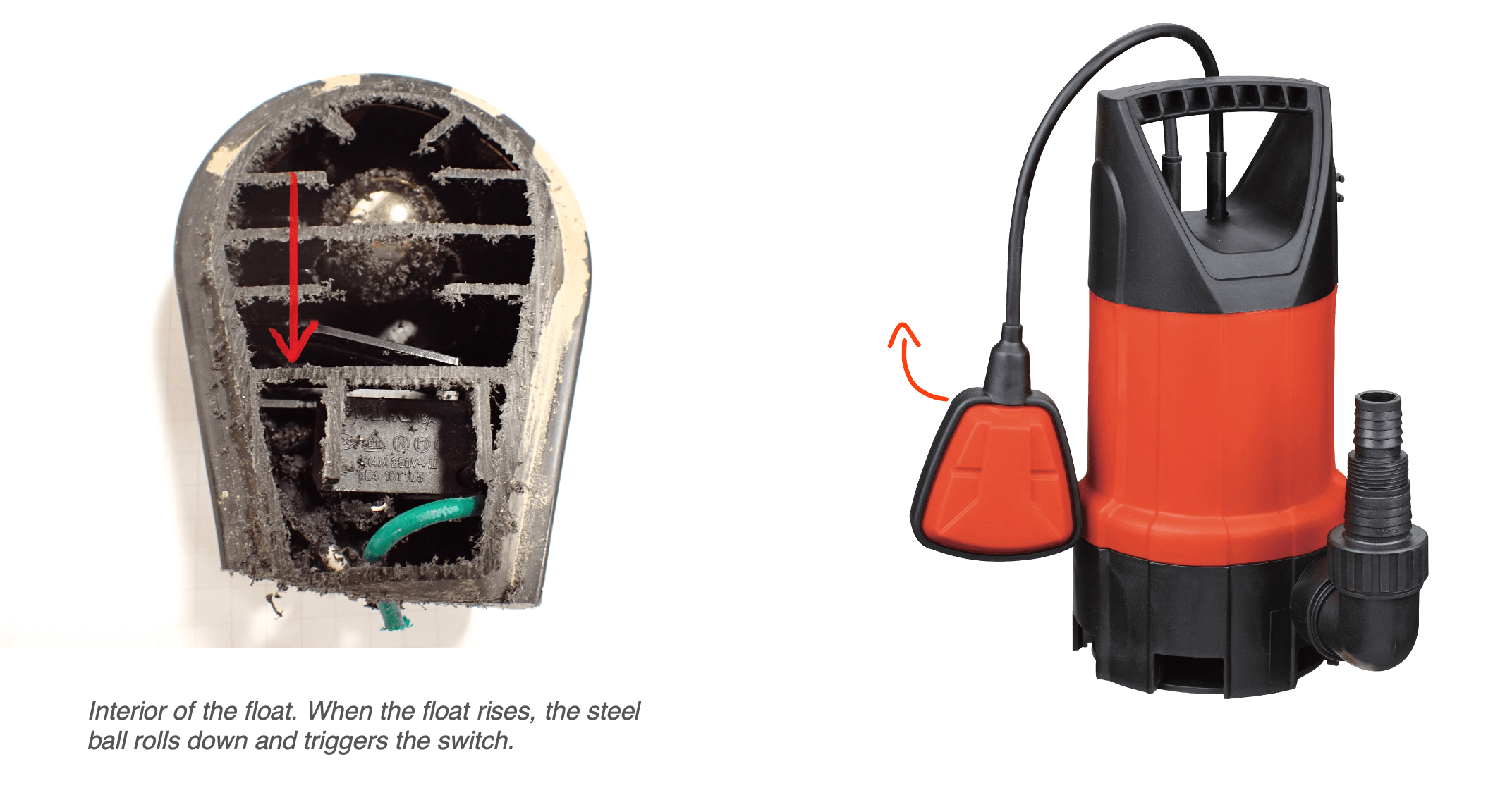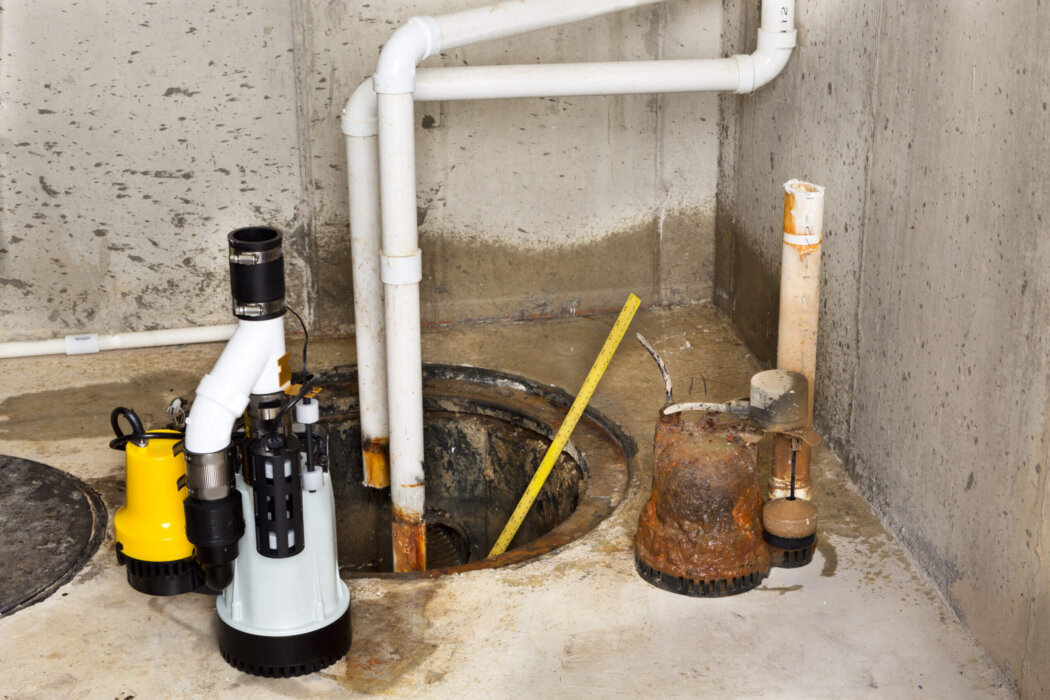By André Delhaise, Ph.D., P.Eng.
The sump pump is an important, but often overlooked, part of a home. These invaluable appliances are used to remove moisture from the basement or foundation of a building, transporting it elsewhere, and preventing flooding and moisture issues. Sump pumps should be maintained and inspected yearly, and generally have an operating life expectancy of approximately 10 years.
 Typically installed at the lowest point of a home in a sump pit, the pump sits on a tile or wood surface on the floor of the pit, where water will collect. Usually, these pits are 18-24 inches in diameter, between 22 and 36 inches deep, and they are generally covered to prevent debris (and people) from falling in, clogging or creating blockages in the pump. As the pit fills with water, the sump pump will activate and begin to pump the water out of a discharge pipe. There is normally a float switch that activates when the water reaches a certain level, activating the pump motor. The motor turns an impeller, drawing water out of the sump pit, through a discharge pipe and, usually, into a storm drain. Once the water level drops sufficiently, the float drops, releasing the switch and causing the pump to turn off. The discharge pipe is often equipped with a check valve, which opens as water is being removed, and closes when the water level in the pit is below the level in the pipe, preventing the sump pit from refilling and keeping the pump running unnecessarily.
Typically installed at the lowest point of a home in a sump pit, the pump sits on a tile or wood surface on the floor of the pit, where water will collect. Usually, these pits are 18-24 inches in diameter, between 22 and 36 inches deep, and they are generally covered to prevent debris (and people) from falling in, clogging or creating blockages in the pump. As the pit fills with water, the sump pump will activate and begin to pump the water out of a discharge pipe. There is normally a float switch that activates when the water reaches a certain level, activating the pump motor. The motor turns an impeller, drawing water out of the sump pit, through a discharge pipe and, usually, into a storm drain. Once the water level drops sufficiently, the float drops, releasing the switch and causing the pump to turn off. The discharge pipe is often equipped with a check valve, which opens as water is being removed, and closes when the water level in the pit is below the level in the pipe, preventing the sump pit from refilling and keeping the pump running unnecessarily.
While sump failures can happen at any time, they are more prevalent in spring when snowmelt and rainfall mean increased water levels. These failures can be generally attributed to a few general causes: installation, maintenance and manufacturing or design.

Installation
Installation issues are typically due to the size of the sump pit relative to the size of the pump – these go hand in hand! The pit must be sized according to the amount of inflow, and the size of the pump. A small pit will fill faster than a large pit, and a pump that is too small may be overwhelmed, run more frequently and burn out. A large pump, conversely, will experience short cycles more frequently, which can also cause it to fail prematurely. Another issue with a large pump relative to the size of the pit is the float switch getting stuck, such as on the side of the pit. If it becomes stuck in the “on” position, it would cause the pump to run continuously, and if it becomes stuck in the “off” position it may not run when needed. Another installation issue is related to the surface the pump sits on. It is recommended that sump pumps sit on a debris-free surface such as wood or tile, which reduces the amount of foreign material that may enter and clog the pump. Often, we see recommendations that there be multiple pumps working in tandem, allowing for redundancy in case one fails.
Maintenance
Many sump pump issues result from improper or infrequent maintenance. It is generally recommended that a sump pump be maintained on a regular basis by a professional, checking the operation of the pump, as well as for any other potential problems such as blockages. The Sump and Sewage Pump Manufacturer’s Association (SSPMA) recommends that the pump screen or inlet opening be cleaned every 3-4 months, along with running a test cycle to ensure proper performance. Additionally, both the pit and the pump should be cleaned every year, along with any other tasks (e.g., lubrication of motor parts) the pump owner’s manual recommends. Occasionally, a sump pump will fail shortly after maintenance is performed. It is possible that the standard maintenance activities can miss issues, or that the maintenance itself can cause issues when done improperly.

Manufacturing and Design
At CEP, we see some standard manufacturing defects in sump pump failures, including electrical and mechanical failures. Electrical failures are often found in the main line or float switch. Mechanical issues in the pump can be a result of a jammed or defective bearing, broken or worn blades in the impeller or an issue with the check valve. While the check valve is not actually part of the pump itself, it can directly cause issues with the pump. If it fails to open when the water level reaches a sufficient height, it can cause an overflow, or if it remains open, it will allow backflow into the pit and cause the pump to run more frequently and burn out.
In summary
There are many possible causes for a water loss related to a sump pump system, and many are interrelated. To narrow down the origin of a sump pump related failure, several pieces of information may be useful, including photographs of the basement and sump pit, details on the age of the loss location, information on the installation (installer and date of installation), and maintenance records. Sump pump failures may be the result of installation, maintenance or general use, and to determine the actual cause, and potential subrogation, a forensic engineer can be extremely helpful.
In addition to sump pump failures, there are other causes of water losses in basements. For example, we often see issues with the basement drainage system (French drain or weeping tile), drain tiles clogging or improper pitch issues. CEP’s team of civil and structural engineers can evaluate any building and foundation related issues.
